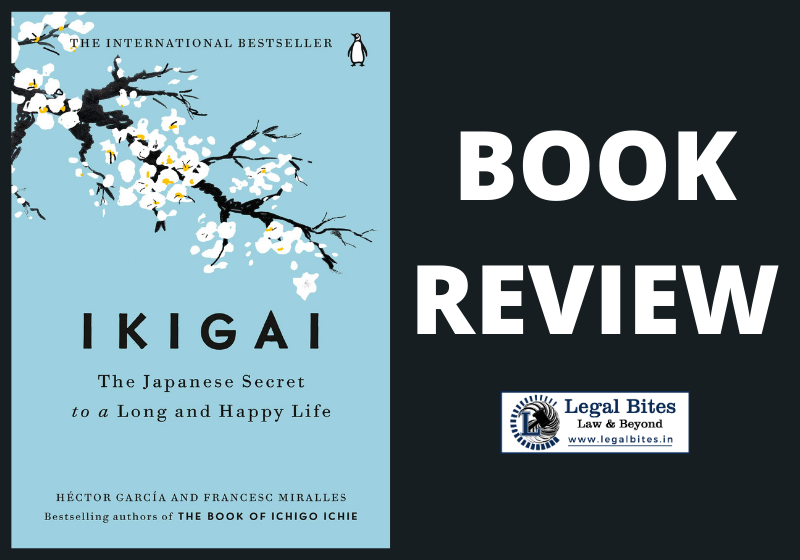Book Review Ikigai: The Japanese Secret to a Long and Happy Life
The Japanese term “ikigai” or the “art of living” refers to the practice of living a purposeful life with respect to a person’s sense of self.

The Japanese term “ikigai” or the “art of living” refers to the practice of living a purposeful life with respect to a person’s sense of self. The book Ikigai: The Japanese Secret to a Long and Happy Life, written by Francesc Miralles and Hector Garcia Puigcerver, discusses this idea from the author’s visit to a town in Japan called Okinawa, home to the largest population of centenarians in the world. Aqueen Ekka reviews the book.
Overview
Authors- Hector Garcia Puigcerver and Francesc Miralles
Published by- Penguin Books
Language- English
Pages- 208
The fascinating thing regarding the Okinawa province is the longevity and healthy living of the villagers. Puicerver and Miralles interviewed the locals in order to understand the true meaning of the word “ikigai”. The book is a perfectly encapsulated blend of cultures which is very practical, as it has fully justified the epitome of a self-help book.
Ikigai: The Japanese Secret to a Long and Happy Life, as a whole, provides a daily dosage of how to embrace and obtain a healthier and happier way of life through discovering our individual ikigai with experiences, practices and tips for a sophisticated yet harmonious lifestyle. Various aspects of our lives are addressed in this book- such as the importance of flow, the importance of friendships, the reason for living and finding a source of motivation.
The book provides a ten-point compressed rule of ikigai:
-
Stay active; don’t retire.
-
Take it slow.
-
Don’t fill your stomach.
-
Surround yourself with good friends.
-
Get in shape for your next birthday.
-
Smile.
-
Reconnect with nature.
-
Give thanks.
-
Live in the moment.
-
Follow your ikigai.
It has been observed that the villagers of Okinawa abide by these rules due to which the centenarians have discovered that there exist extremely low rates of heart disease and dementia among these villagers.
The second element of the book lays down the significance of mental health, which is often neglected by laymen. The book provides tips as to how one can activate the brain, which is often restricted solely to routine and patterns, therefore, lacking flexibility. It suggests activities like social interaction and mind games, which can be beneficial as a workout for the brain.
It also states that avoiding stress is essential for a healthy lifestyle. Necessary scientific studies have also been introduced, which show that stress, in the long run, impacts the healthy cells in our body, thereby leading to premature ageing. It presents Yoga as a remedy which would calm the body and mind.
The third segment of this book enlightens us about a technique known as Morita therapy. It was primarily introduced to relieve anxiety and obsessive behaviour. The therapy requires the individual to cultivate new emotions by accepting their feelings and mannerisms. The book in this segment provides a detailed explanation of how this therapy functions, which can be practically applied by an individual to attain one’s ikigai.
The fourth segment of this book focuses on the “flow” concept. The flow concept revolves around enjoying the smaller joys of life, in a manner that sustains concentration so that the person doesn’t get bored in doing it. In addition to this, the importance of surpassing levels of difficulty has also been addressed, and how flow can be acquired through new thrilling activities which drive us to discover new traits and aspects of us. This book encourages small gestures to establish and preserve friendships, such as greeting a stranger with a smile that can directly impact an individual’s longevity.
Suggestions for a Healthy Life
Towards the end, the book talks about the Okinawan diet, which is variegated, self-sourced and cooked. We are introduced to the Okinawan tradition, hara hachi bu, which suggests that one should finish eating once they are eighty per cent full. The book also mentions various beverages consumed by the centenarians, like green tea, white tea and shikuwasa (traditional Japanese fruit), which contain high antioxidant levels and cater to a healthy and long life. The Okinawans’ belief in exercise leads them to practice Radio Taiso, which is a warm-up exercise. The authors disclose these lifestyle habits with the purpose of inspiring urban and semi-urban people to adopt these traits.
Pursuing activities that enhance and increase the vibration of an individual could increase their lifespan and quality of life. The goal of the book is not to preach or patronise the reader in their current lifestyle choices. Instead, it plainly points out to us that a disciplined and healthy lifestyle is a real possibility. It supports each idea with common sense, anecdotal or scientific evidence and reminds us that if the locals of a small town in Japan can do it, so can we.
Conclusion: A Guide to Happiness and Mental Well-being
In the words of Neil Pasricha, bestselling author of The Happiness Equation:
“Ikigai gently unlocks simple secrets we can all use to live long, meaningful, happy lives. Science-based studies weave beautifully into an honest, straight-talking conversation you won’t be able to put down. Warm, patient, and kind, this book pulls you gently along your own journey rather than pushing you from behind.”
Overall, this book is truly uplifting. The reader is intrigued by the simplicity and calming tone it offers, and it captures the attention of the reader till the end. The book unleashes the Japanese Zen philosophy, inspiring the readers to search and discover their individual ikigai. Through this book, the authors aim to encourage healthy, content and purposeful living among people.


